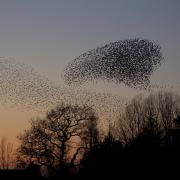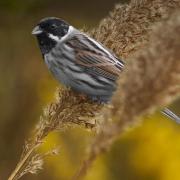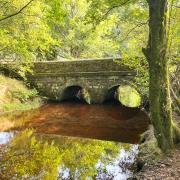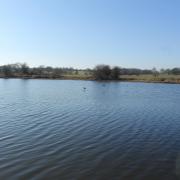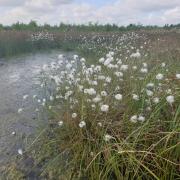Sarah Robinson and her trusty scythe are helping to bring the colour back to Bowland’s meadows. Sebastian Oake reports
Sarah Robinson is adept at using a traditional long-handled scythe, having perfected the skill by training on remote farmland in Transylvania. This summer she has been putting that skill into practice in the meadows of Bowland, cutting hay by hand in those places where machinery can’t go.
It’s part of the Bowland Hay Time Project, which is attempting to restore land that has, over the years, lost its richness. This means cutting hay where wild flowers are abundant, collecting the seed and then spreading it on nearby fields where it is needed.
The project, co-ordinated by Sarah, is in its second summer, drawing on pioneering work already carried out in the Yorkshire Dales and the Northern Pennines. If the targets are reached, the project will help bring back the vibrant colours of wild flowers to around 60 hectares of grassland.
‘Since the 1950s,’ she says, ‘97 per cent of flower-rich meadows across England have gone. After the war-time food shortages, farmers were encouraged to plough and reseed land with vigorous types of grass. Wild flowers are adapted to living in conditions of low fertility. They couldn’t hold their own.’
Even among the traditional farms in the Forest of Bowland, the sight of a meadow brimming with wild flowers is much less common. In fact, they are one of our rarest habitats and a priority for conservation under the UK Biodiversity Action Plan.
Some beautiful old meadows have survived, particularly around Slaidburn and at the top of Roeburndale. The meadows at Bell Sykes Farm at Slaidburn have just been designated as the Coronation Meadows for Lancashire set up by the Prince of Wales to encourage more farmers to restore meadows.
These fields might contain up to 120 different types of wild plant – a colourful mix of beauties like melancholy thistle and yellow rattle. It is seed from this sort of meadowland that Sarah has been using to restore other fields.
‘The essence of what we are doing is simple,’ she says. ‘We are harvesting seed from a species-rich donor meadow and taking it to a recipient meadow close by with similar soil chemistry. We take away no more than a third of the hay from the donor site – so we don’t leave it without its own seed supply.’
Last year 17 hectares were restored in this way, slightly less than the target. ‘Considering how much it rained, I’m actually very pleased with that,’ says Sarah. She explains that the project’s green-hay harvesting machine gets bunged up in the wet, just like a lawn mower. With dry weather so critical, this summer there was much weather-watching before harvesting and seeding could get underway, a process that is likely to last until mid-August. The aim is to gather enough seed to for 40-plus hectares.
Some seed, particularly from knapweed, melancholy thistle, meadow vetchling and meadow cranesbill, is being gathered carefully by hand and developed into wild flower plugs, which will be painstakingly dug in during the autumn.
It’s all a huge task but Sarah believes it is worth it. ‘Flower-rich meadows have become really quite rare and special,’ she says. ‘They have amazing beauty and are just lovely places to be.
“Meadows can also support a huge web of biodiversity including bees, butterflies and other invertebrates. The invertebrates provide food sources for birds, bats and small mammals, which in turn can be prey for other creatures. The more species-rich a habitat is in terms of its plants, the more diversity of life it can support.’
They can be uplifting places to visit and if you want to get really hands-on you can attend a scythe training day in August or help with collecting seed or planting out flower plugs later in the year.
If the Bowland Hay Time Project is a success, the arresting sight of a summer meadow ablaze with colour will become more common right here in Lancashire. That can only brighten things up for all of us. Let’s hope Sarah has given her scythe a good sharpening.
Just a mow
For more information visit www.forestofbowland.com/haytimeproject.
The project is currently set to run until October 2013 but you can donate to the Hay Time Appeal, set up to help continue meadow restoration in Bowland and the Yorkshire Dales after this time. Visit www.ydmt.org/haytimeappeal. For learning to scythe and wild flower planting events, visit www.forestofbowland.com/festivalevents
Information on Coronation Meadows can be found at www.coronationmeadows.org.uk
The author, Sebastian Oake, can be contacted at sebastian@smartercat.co.uk
















